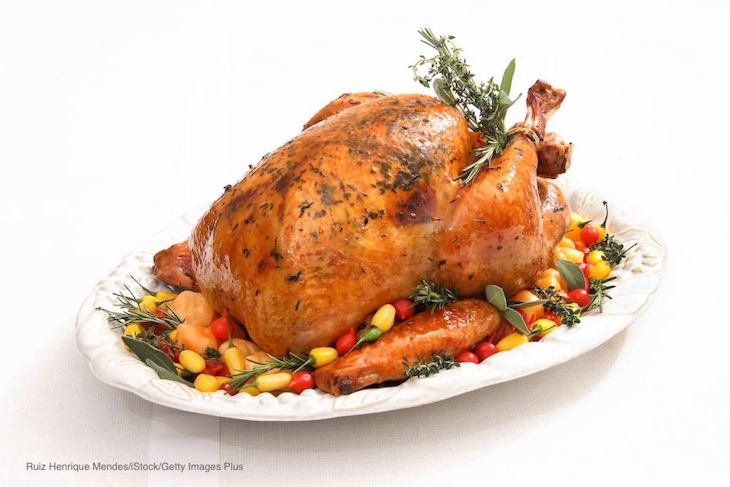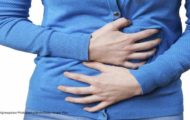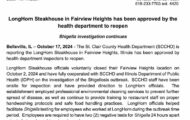Thanksgiving food safety tips from the USDA will help you keep your family and friends safe as you celebrate the holiday this year. Follow the basic four steps to food safety – clean, separate, cook, and chill. But there are other tips you need to keep in mind.

Handwashing is the first step to avoiding any foodborne illness. Wash your hands with soap and water for at least 20 seconds before you start preparing food, after using the bathroom, and before serving food and eating. Also wash your hands after you handle raw meat, poultry, fish, seafood, and eggs.
Avoid cross-contamination by cleaning and sanitizing any surfaces that have touched raw turkey and its juices. That includes counters, sinks, stoves, tabletops, utensils, and plates. Also use separate cutting boards for meat and poultry and for produce.
Remember that you should never wash or rinse raw poultry. This action can aerosolize bacteria and spread it around your kitchen. The only way to destroy pathogens on raw poultry is to cook it. In addition, the sink is the most contaminated area in your kitchen, and washing poultry only makes it worse.
Never ever thaw your turkey on the counter or in hot water. If you haven’t thawed your turkey in time, and it’s still frozen, consider cooking it from frozen; this easy method is foolproof and also reduces the risk of contaminating the kitchen with turkey juices. If you still want to thaw the turkey, there are two ways to do it safely and quickly.
You can thaw a turkey in a cold water bath, but this method requires some attention. Allow 30 minutes per pound of turkey. First, submerge the turkey in cold water in its original wrapping. Then change the water every 30 minutes until the turkey is thawed. You must cook the turkey immediately after using this method.
You can also thaw the turkey in the microwave oven, if the bird will fit in it. Follow the manufacturer’s recommendations for using this method. Again, you must cook the turkey immediately after it’s thawed.
And make sure your turkey is cooked to a safe final internal temperature of 165°F by using a reliable food thermometer. Check the thickest part of the breast, the innermost part of the wing, and the innermost part of the thigh, making sure to avoid bone. Use a food thermometer even if the turkey comes with a pop-up temperature indicator.
The USDA recommends against stuffing the turkey because bacteria can grow easily in its center. If you choose to stuff your turkey, combine the wet and dry ingredients just before you fill the cavity. Do not stuff the turkey and leave it in the fridge before you cook it. Stuff the turkey loosely, using about 3/4 cup of stuffing per pound. Immediately cook the turkey after it’s stuffed, at a temperature no lower than 325°F. Remember that a stuffed turkey takes longer to bake. You need to check the center of the stuffing with a food thermometer too, to make sure it is 165°F. And let the stuffed cooked turkey stand for 20 minute when it comes out of the oven before removing the stuffing.
Remember the two hour rule. All perishable foods must be refrigerated within two hours of coming out of the stove or fridge, or one hour if the ambient air temperature is above 90°F. When you transport food, put it in insulated containers, using an ice or gel pack to keep cold foods cold.
And everyone looks forward to Thanksgiving leftovers. But they must have been refrigerated promptly to be safe to eat. And always reheat all leftovers to 165°F, and check that temperature with a food thermometer. You can freeze leftovers, but they will only keep best quality for two to six months.




